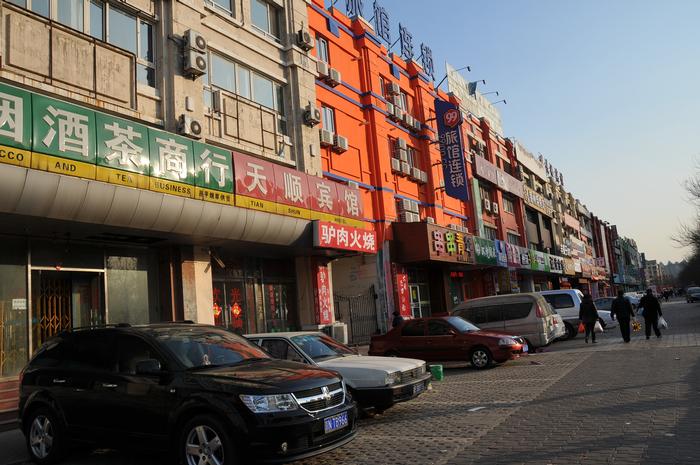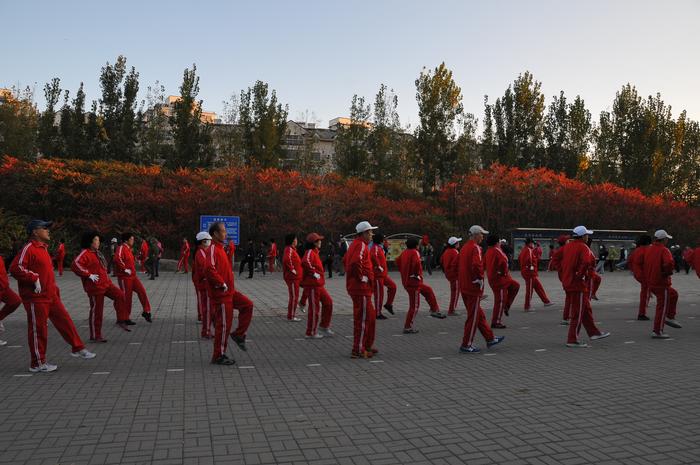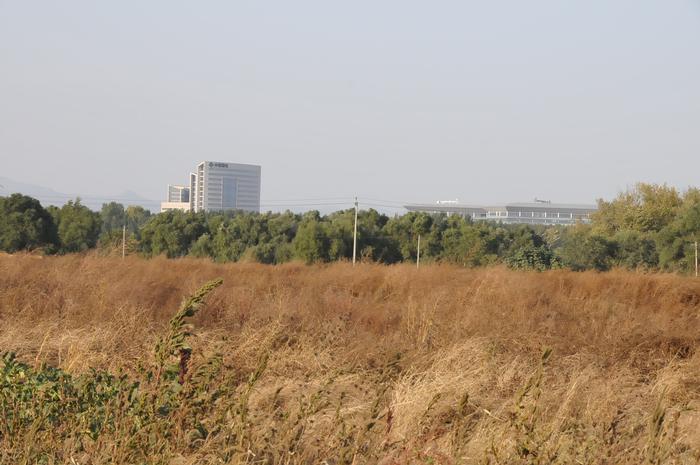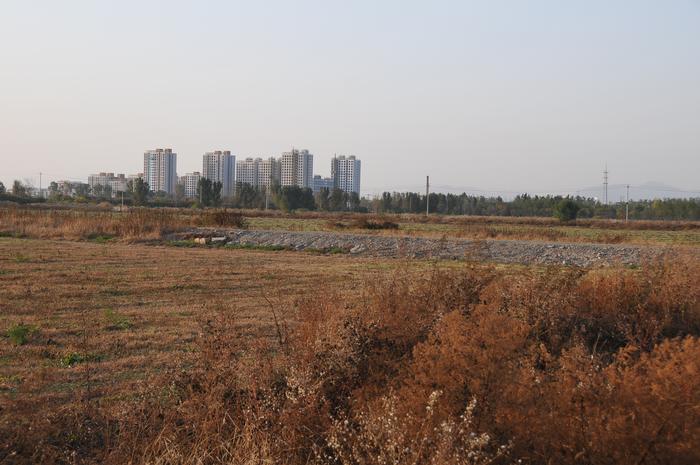[ID:1120] Residential Design and Physical Health: A Comparison of Two Communities in Beijing, ChinaUnited States In the 21st century, health is defined as “a state of complete physical, mental, and social well-being, not just the absence of disease or infirmity” by the World Health Organization (WHO). Balanced residential and public spaces are the indispensable parts of built environments and help prevent chronic diseases. However, housing characteristics, land-use patterns, and transportation options and the effects of all three on community health have been not considered in architectural and urban-design decisions(1). Architects, engineers, and government official are all responsible for providing not only affordable and culturally appropriate social community housing, but also community spaces that encourage active lifestyles. Therefore, a healthful built environment should promote both physical and mental wellbeing. A sedentary community environment, on the contrary, provides no opportunities and can even discourage active living and restoration, thus leading to a decrease in public health. Buildings and their surroundings can unify a community and promote an active human-building relationship: buildings and residents become friendly related as a whole, healthy social settlement. A comparison of two communities in Beijing, China demonstrates how planned communities can contribute to an active, healthy lifestyle or jeopardize the physical and mental wellbeing of residents. The first community, Tiantong Yuan community, demonstrates a multi-faceted example of how a residential complex can promote holistic public health. The second community, Meiyu community, is located fifteen miles from Tiantong Yuan and represents a poor resident-environmental relationship and lack of social interaction. Comparing and contrasting the two communities reveals characteristics of buildings and communities that synergistically affect physical and mental health, such as the association between appropriate density, street connectivity and active travel and leisure time(2). Singular or segregate land uses are responsible for psychological pressure and chronicle diseases such as high blood pressure and diabetes. Existing environment directly influences social potentials of communities and therefore leads their residents to be active or stressful in daily life. As a result, the physical environment, including transportation options and surrounding landscapes, is crucial to create a healthfully, interactive community space. The Tiantong Yuan apartment complex (population more than 300,000, known as the largest community in Asia) successfully demonstrates how a densely populated area promotes its residents’ health. Two major factors contributing to public health in this community are: physical activity opportunities and urban networks. Existing mixed land use, including service facilities and access to transportation, provide a physical setting that encourages daily physical activity. Similarly, residents’ social interaction and restorative communications are strengthened by the resulting active lifestyle and environment that offers choices. As a prerequisite of sponsoring an active, healthy life, all domestic buildings, transportation options, and service areas are systematically integrated into a unity: a strongly connected space between residential and service area that satisfy both basic life needs and promote active living. Apartment buildings in Tiantong Yuan are designed to accommodate three basic features of a fit, safe, and restorative home environment for residents: walking promotion, orientation, and space between buildings. Together, these three factors encourage physical activity and associated psychological benefits among residents. For example, seven-story tall apartment buildings with modified stairs containing three-inch tall steps encourage daily exercise. More than half of the elderly residents in the community engage in physical activity by taking the stairs two-to-four times daily. Additional psychological benefits are noticeable: many elderly feel more independent and confident about their health condition when they are able to walk home. Climbing the modified stairs not only strengthens bones and muscles, but also contributes to the reduction of obesity and related diseases such as diabetes(3). Secondly, the buildings’ north-south orientation provides every unit with natural sunlight and ventilation. Thirdly, typical spacing between apartment buildings is no less than 60 feet and typically contains a parking lot planted with trees and grass, and paved with bricks instead of heat-reflecting concrete or asphalt. Parking lots are located 10 feet away from unit doors, saving time for families carrying items and children from cars into their homes. During sunny days, trees offer shade that prevents cars from over-heating and releasing harmful gases from interior plastics(4). Rows of trees and bushes create visual interest and prevent sensory deprivation, promoting restoration and reducing boredom(5). At the urban scale, the community promotes social interaction among its residents and use of the service facilities. In 1999, the first area built - "Central Park" - addressed typical daily needs of Chinese residents by offering affordable housing, appropriate urban density, and mixed land use (6). The neighborhood expanded over the next 15 years by copying its original design format: residential apartments integrated with service facilities and amenities, with a public park or garden in the center. Now, the community occupies more than eight square kilometers with five major residential quarters, providing a holistic and healthy living space for the common population: mostly middle class rather than only a segregated group of high-income residents that often occupy residential communities. Social interaction and restorative activities are further promoted by three urban elements: a variety of transportation options, appropriately located public spaces, and well connected service facilities. First, access to a variety of convenient transportation options connects residents to their surroundings and neighbors. Traversing the community is not only a need but also an interest that can be achieved by various approaches, and therefore enhances the frequency and chances of engaging in physical activity and social interaction. Active transportation is associated with reduced risk of obesity and other chronic diseases(7). Some examples of transportation options are: four subway stations reachable within 10-minutes walk; a less than 20 minute bus which connect domestic area directly with other distant subway stations and two bus routes make their way to downtown Beijing. These options provide cost- and time-saving routes for the working class. Another four bus routes run within the community, linking residential areas to farmer’s markets, supermarkets, and shopping areas within 20 minute of walk. Busses also make it possible for elders and children to traverse the community freely within 8-10 miles without depending on automobiles. Secondly, sidewalks promote walking rather than dependence on gasoline. Vehicular travel rather than walking can produce adverse health effects. It has been shown that each additional hour spent in a car per day was associated with a 6% increase in the risk of obesity, while each additional kilometer walked per say was associated with a 4.8% reduction in the odds of being obese(8). Street networks and walkable distances--usually less than a half mile—serve to connect service area and domestic block; 13-foot sidewalks promote walking and active transportation(9). People can enjoy their daily commute by walking in fresh air rather than spending time in indoor gyms. Walking also promotes social interaction when someone encounters another person when commuting home (10), and helps blood circulation throughout the body. Viewing outdoor scenes along the walk promotes mental restoration (11). Walking on sidewalks at night is very safe in Beijing, so people usually take a walk after dinner with family and friends instead of sitting in front of televisions. Safe, easily-accessible walking paths connect public parks and playgrounds to residential buildings, promoting various physical activities for different ages. For example, a playground within a 10-minute walk from a residential area of 10,000 people living there and going out every evening and participate in dancing, fast-walking, and other sports groups. It is very relaxing to walk with many people and chat at the same time. People perform cardio exercise and meanwhile engage in social interaction with neighbors instead of exercising on a treadmill in a gym. Residents of Tiantong Yuan who engage in social interaction and exercise for more than four times a week benefit from a decrease in chronic diseases such as high blood pressure, depression, and diabetes(12)(13)(14). The safe and cost-effective sidewalks make it possible for people to consistently relax and exercise. Thirdly, this network among streets, service areas and residential quarters makes the neighborhood similar to the ideal city (Civitas) form proposed by Leon Krier: sidewalks serve community health better with an organic land use mix. Markets, shopping malls, banks, hospitals, restaurants and other public facilities (Res Publica) are distributed along the major sidewalks and within residential quarters (Res Economica) to lead the community to be a multi-functional, enjoyable place instead of a single-use, low-density neighborhood. For example, markets are located within a 15-minute walk; fresh vegetables, fruits, meats and other groceries await customers in a 250-acre farmer’s market within a 20-minute walk; small locally-owned shops provide pedestrians with everything from a home-made snack to a hot meal, from a towel to a bike... The variety of opportunities enables residents to take full advantage of walkability and enjoy every day with lively streets. In contrast with the healthy, walkable environment of the Tiantong Yuan community, the Meiyu community is characterized by an inactive lifestyle, where residents' health is jeopardized due to singular land use and no walkability. Inappropriate design features contribute to an oppressive and boring residential experience. The Meiyu apartment complex was a product of over-inflated real estate market in 2003, a turning point from which housing became the major contributor of GDP—Gross Domestic Product-- and the fame of a "well-operated government" (15). The entire community was designed and built in only one-and-a-half years, without enough time to examine or research residents’ actual needs. Developers and engineers, no architects, did not incorporate walkable, connected streets and separated the complex from other types of land use necessary for daily life. Secondly, gardens and parks lost their original function—providing mental relief--and became marketing tools increasing housing prices(16). In Meiyu, poor building features contribute to an inactive lifestyle: an apartment building is usually 15-20 stories high with elevators as the primary mode of vertical transportation. Stair cases are inserted into enclosed spaces without windows, natural light, or fresh air. A poor ventilation results more exposure to allergens and bacteria in the dust, leading to more health symptoms (17) . People rely on elevators, increasing energy use and decreasing daily exercise. Next, space between buildings, often 40 feet, contains parking lots and no parks or green space. There is a about five-foot sidewalk between the front door and parking lot, making it dangerous to walk between rows of cars. Often, a car will pass by only 2-3 feet away. When residents open a window to look outside, they see a grey building and crowded, parked cars instead of vegetation or gardens. When they want to have dinner outside, they must first sit in cars for 30 minutes in a traffic jam to drive to a restaurant. The lack of sidewalks renders a poor connection between residents and built environment, resulting in a sedentary lifestyle that contributes to depression, obesity, and other psychological and physical stresses (18) (19). Besides the major problems of those intense and stressful buildings are their over-enclosed interior spaces and lack of green, open exterior spaces. The percentage between man-made environment and natural landscape does not offer a restorative environment. Although designers originally planned a central green space for the community, the existing single, artificial space is not sufficient to accommodate residents' daily exposure to nature. An over-emphasis on only putting in a central green space also neglected many spaces that could have been utilized as additional sidewalks for walking. What's unfortunate is that, in most cases where a central green space was "built," it only served to raise housing prices rather than serve residents. In order to alter this situation, it is critical for prospective designers to view green space as more than a marketing item. Restorative natural landscapes should be designed with the recognition of our in-born attachment to nature, an instinctive bond between human beings and other life forms called Biophilia(20). A green space is far more than an exhibition, but a public space that offers restoration, a place for social interaction, and opportunity for physical activity. Several ways to enhance the human-nature connection are: introducing native grasses into parking lots and surrounding sidewalks, planting common trees and bushes to provide views of nature, and providing interactive space to encourage residents to engage with nature, and establishing hierarchical space to lead people to a central green. Greens perform very well in absorbing carbon dioxide and other chemical exhaust which contaminates air and causes respiratory diseases; seeing and smelling plants also have positive effect on reducing one's optical fatigue and mind stress (21). To promote healthy built environments, many efforts are needed to take, especially by designers and developers. Health issues must be addressed in the early stage of the design process, including local culture, land use, transportation, and even climate. Considering the economic condition in China where governments share benefits with real estate professionals, an independent group of experts is needed to perform analysis on social, economic, and political factors that affect residential health. The Health Impact Assessment in the United States is a good example. However, today's real estate professionals are more likely to be attracted to short-term profit rather than long-term benefits. A built environment, however, is not a tool for financial gain or one-time benefit; that is not sustainable. Residential buildings, instead, should contribute to social, physical, and mental health. They should provide a place where healthy, sustainable actions can be performed daily. On the civic side, the unity of a residential complex shall benefit not only from integration within a “walkable neighborhood,” but also a safe, dynamically connected community that encourages access to daily needs and recreational activities. Architects and designers are responsible for creating spaces which can be enjoyed by and promote health of residents: walkable neighborhoods for reducing daily commutes; including green space for physical activities, arranging mixed-use streets for walking and access to service facilities, and offering a variety of activities, transportation options, and housing options. Learning from the Tiantong Yuan, a good building and neighborhood should focus on the holistic well-being of its residents. It is critical for us as architects to engage our clients in the design process. .In future studies, residential communities, which are far more than many buildings, should become a very intriguing "architectural" work for us: well-connected transportation, fairly distributed service functions, sidewalks that can be used as physical activity places, suitable building location, and public green spaces….The community space should also be viewed as a whole to serve active social and environmental functions: offering walkable distance and safe space to link residents intimately with service facilities, green gardens, and activity places without use of vehicles. Walkability and natural landscapes should be well designed for residents to seek their physical and psychological wellbeing in their own community. The so-called "We are all connected" should be not only among human beings, but also among architectures, homes, minds and environments.
1. Richard J. Jackson, Chris Kochtitzky. Creating a Healthy Environment: the Impact of the Built Environment on Public Health. Sprawl Watch Clearinghouse. Washington,DC. 2. Reid Ewing, Susan Handy, Ross C. Brownson, Otto Clemente, and Emily winston. Identifying and Measuring Urban Design Qualities Related to Walkability. Journal of Physical Activity and Health. 2006. 3. Ekblom-Bak, Elin, et al. "The importance of non-exercise physical activity for cardiovascular health and longevity." British journal of sports medicine 48.3 (2014): 233-238. 4. He Xiaofeng, et al. “Measurement and Analysis on Volatile Organic Compounds in Car Decoration Materials”. Environmental Science and Technology. 33.12 (2010): 149-151. 5. Gary W.Ewans and Janetta Mitchell Mccoy. When Builings don't work:The Role of Architecture in Human Health. Journal of Environmental Psychology, 1998 6. Liu Yang. "Plans and Designs of the Core Area in Tiantong Yuan Community." Architecture Design II. (2006): 129-131. 7. Lawrence D. Frank, James F. Sallis, Terry L. Conway, James E. Chapman, Brain E. Saelens, and William Bachman. "Many Pathways from Land use to health: Associations between Neighborhood Walkability and Active Transportation, Body Mass Index, and Air Quality". Journal of the American Planning Association, Chicago, 2006. 8. Knaap. G., & Nelson, A. C. (1992). "The Regulated Landscape". Cambridge, MA: Lincoln Institute of Land Policy. 9. Lawrence D. Frank, James F. Sallis, Terry L. Conway, James E. Chapman, Brain E. Saelens, and William Bachman. "Many Pathways from Land use to health: Associations between Neighborhood Walkability and Active Transportation, Body Mass Index, and Air Quality". Journal of the American Planning Association, Chicago, 2006. 10. T Sugiyama, E Leslie, B Giles-Corti, N Owen. "Associations of neighbourhood greenness with physical and mental health: do walking, social coherence and local social interaction explain the relationships"? The University of Queensland, Herston, Queensland 4006, Australia 11. Jun Zhao. "A Better blood Circulation influences the Healing of Modern Diseases". The Science Behind Recreational Activities. Beijing, 2003 12.. Di Loreto, Chiara, et al. "Make Your Diabetic Patients Walk Long-term impact of different amounts of physical activity on type 2 diabetes." Diabetes Care 28.6 (2005): 1295-1302. 13. Aman, Edris, and David R. Thomas. "Supervised exercise to reduce agitation in severely cognitively impaired persons." Journal of the American Medical Directors Association 10.4 (2009): 271-276. 14. Kelley, George A., Kristi S. Kelley, and Zung Vu Tran. "Walking and Resting Blood Pressure in Adults: a Meta-analysis." Preventive medicine 33.2 (2001): 120-127. 15. Li Tian, Wenjun Ma. "Government Intervention in City Development of China: a Tool of Land Supply". Land Use Policy. 2008. 16. Liu Bingyi, and Jiang Yunfang. "Erros and Countermeasures on China’s Urban green space system”. Urban Planning, 26.2 (2002): 76-80. 17. Daisey, Joan M., William J. Angell, and Michael G. Apte. "Indoor Air quality, Ventilation and Health Symptoms in Schools: an Analysis of Existing Information." Indoor air 13.1 (2003): 53-64. 18. McGINNIS, J. MICHAEL. "The Public Health Burden of a Sedentary Lifestyle." Medicine and Science in Sports and Exercise 24.6 Suppl (1992): S196-200. 19. Keeler, Emmett B., et al. "The external costs of a sedentary life-style." American Journal of Public Health 79.8 (1989): 975-981. 20. Kellert, Stephen R., and Edward O. Wilson, eds. The biophilia hypothesis. Island Press, 1995. 21.Wu Zhiping, Wang Cheng. "Urban green space and human health". World Forestry Research 20.2 (2007): 32-37.
If you would like to contact this author, please send a request to info@berkeleyprize.org. |




